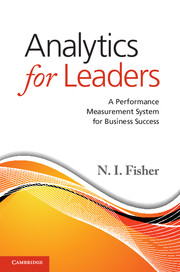Book contents
- Frontmatter
- Dedication
- Contents
- List of exhibits
- Preface
- Acknowledgments
- 1 How’s your due diligence?
- 2 Introduction to the system
- 3 A framework for performance measurement
- 4 What is Stakeholder Value?
- 5 Adding Value for Customers
- 6 Adding Value for People
- 7 Adding Value for Partners
- 8 Adding Value for the Community
- 9 Adding Value for the Owners
- 10 What to report and how to report it
- 11 How to get started . . .
- 12 The Performance Measurement Framework: Assessment and adoption
- 13 Practical aspects of managing Stakeholder Value
- 14 Performance measurement for Small and Medium Enterprises
- Appendix Don’t be fooled by statistics
- References
- Index
11 - How to get started . . .
Published online by Cambridge University Press: 05 December 2013
- Frontmatter
- Dedication
- Contents
- List of exhibits
- Preface
- Acknowledgments
- 1 How’s your due diligence?
- 2 Introduction to the system
- 3 A framework for performance measurement
- 4 What is Stakeholder Value?
- 5 Adding Value for Customers
- 6 Adding Value for People
- 7 Adding Value for Partners
- 8 Adding Value for the Community
- 9 Adding Value for the Owners
- 10 What to report and how to report it
- 11 How to get started . . .
- 12 The Performance Measurement Framework: Assessment and adoption
- 13 Practical aspects of managing Stakeholder Value
- 14 Performance measurement for Small and Medium Enterprises
- Appendix Don’t be fooled by statistics
- References
- Index
Summary
Knowledge without know-how is sterile.
Myron TribusPREAMBLE: WHERE ARE WE NOW?
How are data and information currently being used throughout your enterprise to:
manage risk?
inform decision-making – getting the right information, at the right time, in actionable format?
improve all aspects of the business – using business analytics, Six Sigma etc.?
The best entrée to adopting the performance measurement system described in earlier chapters is to find out the answers to these questions. And this is not a major undertaking: It can be accomplished in days not weeks, and by just a small team of two people, with only modest demands on management time.
The outcome of the assessment process will be a list of prioritized improvement strategies and action plans, developed with the leadership, that form the basis for getting started.
THE PERFORMANCE MEASUREMENT FRAMEWORK ASSESSMENT PROCESS
The goal is to assess the status of the enterprise against eight basic criteria1 (see Exhibit 11.1) relating to the Performance Measurement Framework, as a basis for improvement.
Here we give an overview of the assessment process, with the details deferred to Chapter 12. It is modeled on a proven process developed by Norbert Vogel, a leading practitioner in devising and exhibit 11.1. Criteria used in an initial assessment of an enterprise against the Performance Measurement Framework, and the areas explored for each criterion.
- Type
- Chapter
- Information
- Analytics for LeadersA Performance Measurement System for Business Success, pp. 135 - 142Publisher: Cambridge University PressPrint publication year: 2013



